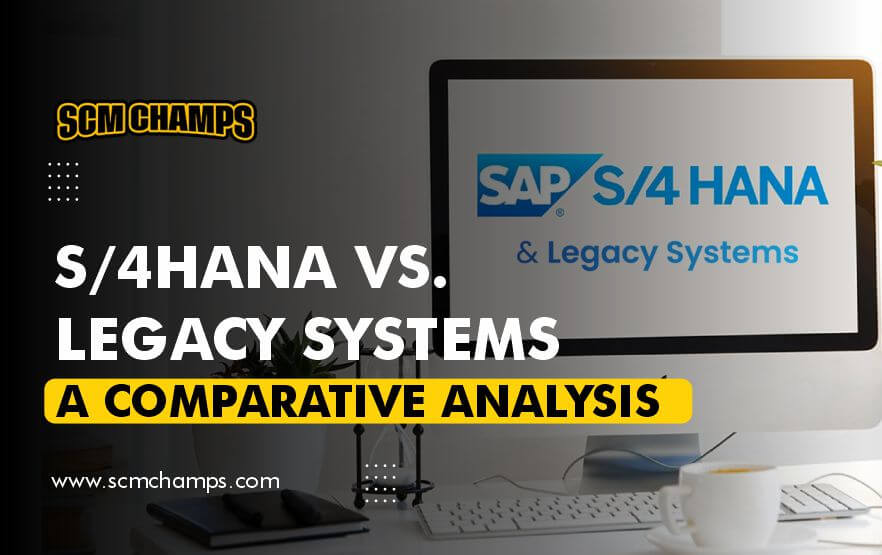
In simple terms, SAP S/4HANA is an advanced business software suite. Created by SAP, a leading enterprise software company, it means SAP Business Suite 4 SAP HANA.
Business Software Suite refers to a set of computer programs that businesses use to manage different segments of their operations. This includes handling finances, keeping track of inventory, managing human resources, and more.
SAP is the company that creates the software. They are known for making applications that help organizations run effectively and efficiently by automating various business processes.
S/4HANA “S” stands for Suite, and “4HANA” refers to the technology being utilized called HANA. HANA is a high-performance, in-memory database. It means that the software can process and analyze very large amounts of data fast.
To summarise, SAP S/4HANA is a powerful set of business tools. S/4HANA implementation uses advanced technology to help organizations manage their day-to-day activities more efficiently. One can compare it to a digital brain for a business. It helps in making informed decisions, optimize processes, and adapt to changes in the market.
Legacy Systems
In simple terminology, a legacy system refers to an old and outdated computer system. It can also be a technology, or software that an organization has been using for a long time. These systems may have worked effectively in the past. But as technology evolved, they became less efficient and the cost of maintenance also increased. Moreover, they did not support the latest features.
Legacy systems may include old software applications, hardware devices, databases, or any other technology that has been in use for a long period. One needs to upgrade or replace legacy systems when they no longer meet the current demands of the business and are costly to maintain. They may also have compatibility issues with newer technologies.
SAP S/4HANA and legacy systems represent two different timelines in enterprise resource planning (ERP) software. There are a few points of comparison between the two systems.
Advanced vs. Traditional Architecture
SAP S/4HANA is built on an advanced, in-memory database called SAP HANA. It allows for real-time data processing and analytics. It uses a simplified data model. The architecture is compatible with both on-premises and cloud deployment. Legacy systems generally have traditional architectures and may not be streamlined for modern computing trends. They often rely on relational databases. They may face difficulties in handling large datasets in real time.
In-Memory Database vs. Traditional Database
SAP S/4HANA uses the SAP HANA in-memory database which provides faster data processing, improved analytics, and real-time insights into data. Legacy Systems often uses traditional relational databases like Microsoft SQL Server, IBM DB2, and Oracle. They may not offer the same level of performance for real-time analytics.
Modern User Interface vs. Complex User Interface
SAP S/4HANA uses a modern user interface. It provides a more responsive user experience. It aims to simplify and optimize business processes. Interfaces in Legacy Systems can differ in a variety of ways. Some may have outdated or complex user interfaces. They may require more training and effort to understand and navigate.
Simplified Data Model vs. Complex Data Model
SAP S/4HANA uses a simplified data model. It improves the efficiency of data processing. This way it eliminates redundancies. Legacy Systems uses complex and redundant data models. They require a lot of customization. The maintenance costs may also be high.
Integration and Connectivity
SAP S/4HANA is designed to integrate and support continuous connectivity with other SAP and non-SAP systems. It uses open standards and APIs for easier integration. Integration in the Legacy Systems may be more challenging. It may require custom development and middleware solutions. This is important to connect with other systems.
Standardized Customization vs. Heavy Customization
SAP S/4HANA uses a more standardized approach. This reduces the need for extensive customization which is generally achieved through extension points and APIs. On the other hand, Legacy Systems often involve heavy customization to meet specific business requirements. This leads to high maintenance costs and challenging issues during upgrades.
Advanced Analytics vs. Static Analytics
SAP S/4HANA provides advanced analytics capabilities which include predictive analytics, embedded analytics, and real-time reporting. In Legacy Systems reporting may be more static, and advanced analytics features may be very few.
Long-term Savings vs. Higher Operational Costs
In SAP S/4HANA the starting implementation costs can be very high. However, it offers long-term savings through improved efficiency and lower maintenance costs. In Legacy Systems while the upfront costs may be lower, it has higher maintenance and operational costs over time. This is especially true as the business grows and evolves.
Final Thoughts
To conclude, SAP S/4HANA implementation is the need of the hour as it represents a more modern and integrated ERP solution. The focus is on real-time analytics and simplified business processes. Legacy systems may still be used in many organizations. However, they often come with serious challenges. They may range from outdated technology, customization problems, and limited support for today’s business needs.
Read also: Tips to Optimizing SAP S/4HANA performance


